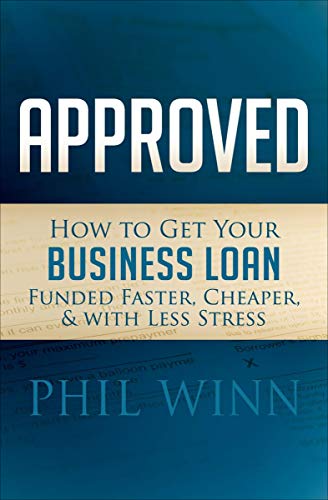Small Business Loans
Approved: How to Get Your Business Loan Funded Faster, Cheaper & with Less Stress
This straightforward road map guides you through the SBA loan approval process—from business plan preparation to submitting a foolproof application.
Few entrepreneurs are aware of the benefits and opportunities available through the Small Business Administration (SBA), mainly because there are few resources available to guide them through the process. Approved was written to fill that gap by providing a step-by-step guide to SBA loan approval—bypassing the difficulties, delays, and expenses that can complicate the procedure.
After finishing Approved, you will be able to highlight strengths (and mitigate weaknesses) from a lender’s perspective, provide a simple business plan identifying how the business will be profitable for the long term, and accurately prepare a business loan application that can be immediately submitted through underwriting—unlike most business applications.
Applying for a business loan can be difficult, time intensive, and expensive, but it doesn’t have to be. This book was written to provide a straightforward road map to help you obtain approval.
In Part One, traditional business loans are compared to business loans backed by the Small Business Administration (SBA) based on 21 factors. In these first two chapters, you will learn why every entrepreneur should consider an SBA loan.
In Part Two, an overview of the SBA’s flagship programs is discussed, including how to meet the SBA’s eligibility requirements, a low bar if you follow the guidelines in this book.
In Part Three, you will learn how to evaluate yourself, your partners, and your business(es) from a lender’s perspective. With this knowledge, you will be able to highlight particular strengths that lenders want to see and mitigate weaknesses that could cause processing delays and even loan declination.
In Part Four, you will learn how to prepare a summary business plan specifically written to obtain financing. A business plan is necessary for financing to take advantage of growth opportunities, acquisition of third-party businesses, and new businesses. In Part Four, you will learn which parts of the business plan to devote more time to and which other sections only need limited information or may be skipped altogether.
In Part Five, you will learn how to prepare your business loan application correctly. Incomplete/incorrect applications cause major delays in the loan approval process. Practically speaking, complete applications always take priority over the incomplete ones. Incomplete applications are often just set aside regardless of when they were initially submitted. In fact, many lenders will simply decline them due to the time that it takes to educate borrowers on how to properly prepare a complete application.
After finishing this book, you will have the ability to highlight the strengths (and mitigate the weaknesses) of your business from a lender’s perspective, provide a simple business plan identifying how your business will be profitable for the long term, and accurately prepare a business loan application package that can be immediately submitted through underwriting without delay.
The US Small Business Administration enables small businesses to obtain more than $20 billion in business funding every year.
How To Get Small Business Loans
Small Business Loans External Links:
